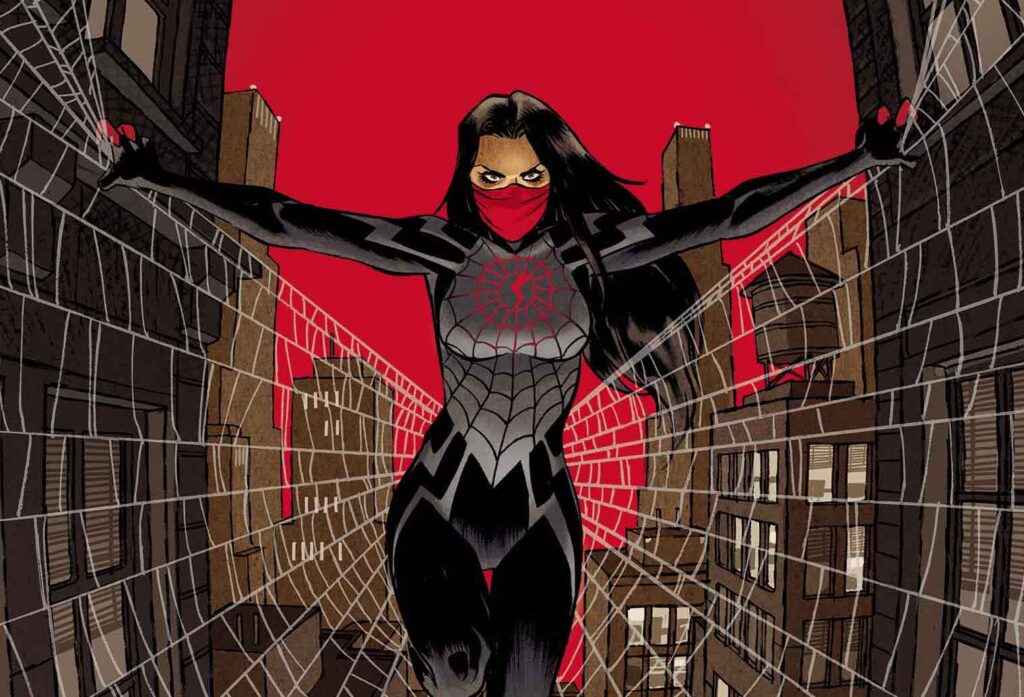A few weeks ago, I attended New York Comic Con, one of the largest gatherings of movie, television, comic book, and video game fans in the U.S. The convention is known for the prevalence of cosplay—that is, people dressing up as characters. I’ve been attending conventions a few times a year since 2013, so I’ve grown quite accustomed to seeing people dressed as superheroes and such.
But there was something different this year—and it wasn’t just the masks (many of which were cleverly incorporated into peoples’ costumes).
Growing up in the 1990s and 2000s as a Chinese American and a fan of popular Western franchises—such as Star Wars and X-Men—meant feeling invisible. Characters of Asian descent, especially members of the diaspora, rarely made appearances on board sci-fi starships or inside high-tech superhero facilities, even as Western media repeatedly appropriated Asian ideas and aesthetics (consider, for example, the Japanese inspirations behind the Jedi Knights in Star Wars, or the fact that Firefly features extensive Chinese décor and costumes but no significant Chinese characters). In fact, the idea that such fantastical adventures were only for white people was so internalized that when I began writing my first published novel Artificial Absolutes back in 2011, it felt rebellious and daring to have my main character, a young woman living in a far-future space-faring society, be Eurasian.
When I started going to conventions, none of the characters I wanted to dress as were Asian, let alone Chinese. Oh, there were a few I could have picked—Jubilee from X-Men, for example. But they were rare, and I wanted to cosplay a character I liked, not just one that happened to be Asian. So I got used to putting on the costumes of white characters—Padme Amidala from Star Wars, for instance—and accepting that I would always look like, well, me in a costume, rather than the actual character.
Then I discovered Silk, aka Cindy Moon, from the Spider-Man franchise—a Korean American superhero with spider powers like Peter Parker. I fell in love with the character and decided I had to cosplay her someday. This summer, with conventions returning after pandemic shutdowns, I finally ordered the costume. When I tried it on, something amazing happened: I looked in the mirror and saw the character, not just me in a costume. And I had to wonder, was this how white cosplayers felt all the time?
Silk turned out to be a popular character at New York Comic Con; I ran into at least half a dozen women dressed as her, and through photos of the event learned there were even more. Some were Asian, and some were not. And there was something else notable about this convention: By far the most popular franchise, based on costumes, appeared to be Avatar: The Last Airbender, an animated fantasy show whose characters and world-building are mostly Asian (it’s inspired by Chinese, Japanese, Tibetan, and Inuit cultures). Add the popularity of Shang-Chi as a character thanks to this year’s blockbuster movie, and for the first time, it felt as if Asians were no longer invisible in popular media.
As a Chinese American, it gave me joy and hope to see so many Asian characters at a convention centered around Western media. Dedicated anime conventions have been around for years, of course, with plenty of Asian characters to choose from there, but as a member of the East Asian diaspora, seeing them wasn’t the same as seeing Western franchises I’d grown up loving finally representing my people. After all, I’m Asian American. I grew up on the same movies and TV shows as my white American counterparts, and that’s where my fandoms lie.
I hope the popularity of characters like Silk—who’s rumored to have a TV show in the works—Shang-Chi, and the cast of Avatar: The Last Airbender means that the next generation of Asian Americans will feel seen in a way those of us who grew up before this current diversity push always longed for. I hope that means they’ll feel normal writing characters who look like them, instead of rule-breaking and defiant.
We’ve come a long way, but we still have a long way to go. Progress isn’t linear. The 1990s also featured a well-meaning push for diversity in media (for instance, the Chinese American superhero Jubilee was one of the main characters in the X-Men cartoons; Star Trek: Voyager and Enterprise both featured regular Asian cast members), but that regressed in the 2000s, with Asians becoming virtually non-existent in media franchises. Now that we’re finally gaining some ground, we can’t let that regression happen again.
Mary Fan is a second generation Chinese American writer, primarily of young adult sci-fi and fantasy, based in Jersey City, NJ. Her published books include Stronger Than a Bronze Dragon, the Starswept trilogy, the Jane Colt trilogy, the Flynn Nightsider series, and the Fated Stars series. In addition, she is the co-editor of the Brave New Girls anthology series about girls in STEM and the editor of the anthology Bad Ass Moms. Her short fiction has appeared in numerous anthologies, including Thrilling Adventure Yarns (ed. Robert Greenberger), Phenomenons: Every Human Creature (ed. Michael Jan Friedman), and Sing, Goddess! (ed. Jane Watson). Outside of writing, she works in financial services marketing, and her hobbies include choir, kickboxing, and aerial arts. Find her online at www.MaryFan.com. This article is part of her monthly column, “Not as Simple as ABC.”

